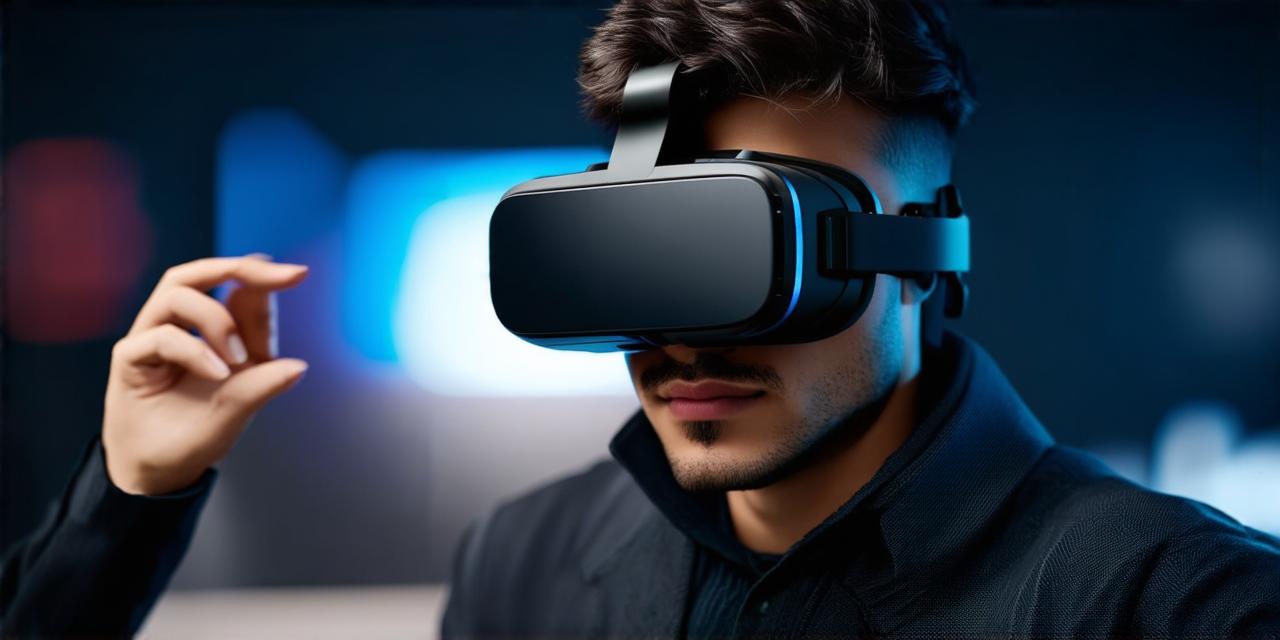What is a Virtual Reality Headset?
A virtual reality headset is a device worn on the head that simulates a 3D environment for the user. It consists of two screens, one for each eye, that display images that mimic what the user would see in real life. The headset also has sensors and cameras that track the movement of the user’s head, adjusting the image accordingly to provide an immersive experience.
Virtual reality headsets are designed to block out the real world and transport the user into a digital realm where they can interact with virtual objects and environments. They can be used for gaming, entertainment, education, training, and even therapy.
The Purpose of a Virtual Reality Headset
The primary purpose of a virtual reality headset is to provide an immersive experience that simulates the real world. The aim is to create a realistic environment that engages the user’s senses and stimulates their imagination.
Virtual reality headsets have several advantages over traditional methods of learning and training. For example, in the medical field, VR headsets can be used for surgical practice, allowing doctors to rehearse procedures without risking patient safety. In the military, VR can be used for combat training, simulating real-life scenarios that prepare soldiers for battle.
Virtual reality headsets are also ideal for entertainment and gaming. They provide a fully immersive experience that transports players into different worlds, allowing them to interact with virtual objects and environments in unique ways.
How Virtual Reality Headsets Work
Virtual reality headsets work by tracking the movement of the user’s head using sensors and cameras. This data is then used to adjust the image displayed on the screens, providing a seamless experience that engages the user’s senses.
There are several types of virtual reality headsets available, each with its own unique features and capabilities. The most common type is the Oculus Quest, which is a wireless VR headset that allows users to move around freely while experiencing virtual environments. Other popular VR headsets include the HTC Vive and the PlayStation VR.
Real-Life Examples of Virtual Reality Headset Usage
Virtual reality technology is being used in many different industries, from gaming and entertainment to education and training. Here are some real-life examples of virtual reality headset usage:
- Gaming
Virtual reality headsets have revolutionized the gaming industry, providing players with an immersive experience that transports them into different worlds. Games like Beat Saber and Half-Life: Alyx are designed specifically for VR headsets, allowing players to interact with virtual objects in unique ways. - Education
Virtual reality technology is being used in education to provide students with a more engaging learning experience. For example, the Google Expeditions app allows students to take virtual field trips to different parts of the world, experiencing different cultures and environments firsthand. - Medical Training
Virtual reality headsets are being used for medical training to simulate surgical procedures and other medical scenarios. For example, the VR Surgical Simulator allows doctors to practice procedures in a safe environment, reducing the risk of patient harm. - Military Training
Virtual reality headsets are being used for military training to simulate combat scenarios and other real-life situations. For example, the Airborne Tactical Operations Center (ATOC) uses VR headsets to train soldiers for airborne operations.Case Studies of Virtual Reality Headset Usage
There are many case studies that demonstrate the effectiveness of virtual reality technology in different industries. Here are a few examples:
- The Impact of Virtual Reality on Learning
A study conducted by the University of Maryland found that students who used virtual reality headsets to learn about ancient Egypt had a better understanding of the subject than those who learned through traditional methods. The study found that VR headsets provided a more engaging and interactive learning experience, which led to better retention and comprehension of information. - Virtual Reality in Healthcare
A study conducted by the University of California found that virtual reality therapy was effective in reducing symptoms of post-traumatic stress disorder (PTSD) in veterans. The study found that VR therapy allowed veterans to confront their fears and traumas in a safe and controlled environment, leading to significant improvements in mental health. - Virtual Reality in Retail
A study conducted by the University of Washington found that virtual reality technology was effective in increasing sales for retailers. The study found that VR headsets provided a more immersive shopping experience, allowing customers to visualize products in 3D and make better purchasing decisions.FAQs
- What types of virtual reality headsets are available?
There are several types of virtual reality headsets available, including the Oculus Quest, HTC Vive, and PlayStation VR. - How does a virtual reality headset work?
Virtual reality headsets work by tracking the movement of the user’s head using sensors and cameras. This data is then used to adjust the image displayed on the screens, providing an immersive experience that engages the user’s senses. - What are some real-life examples of virtual reality headset usage?
Virtual reality technology is being used in many different industries, from gaming and entertainment to education and training. Some real-life examples include gaming, education, medical training
